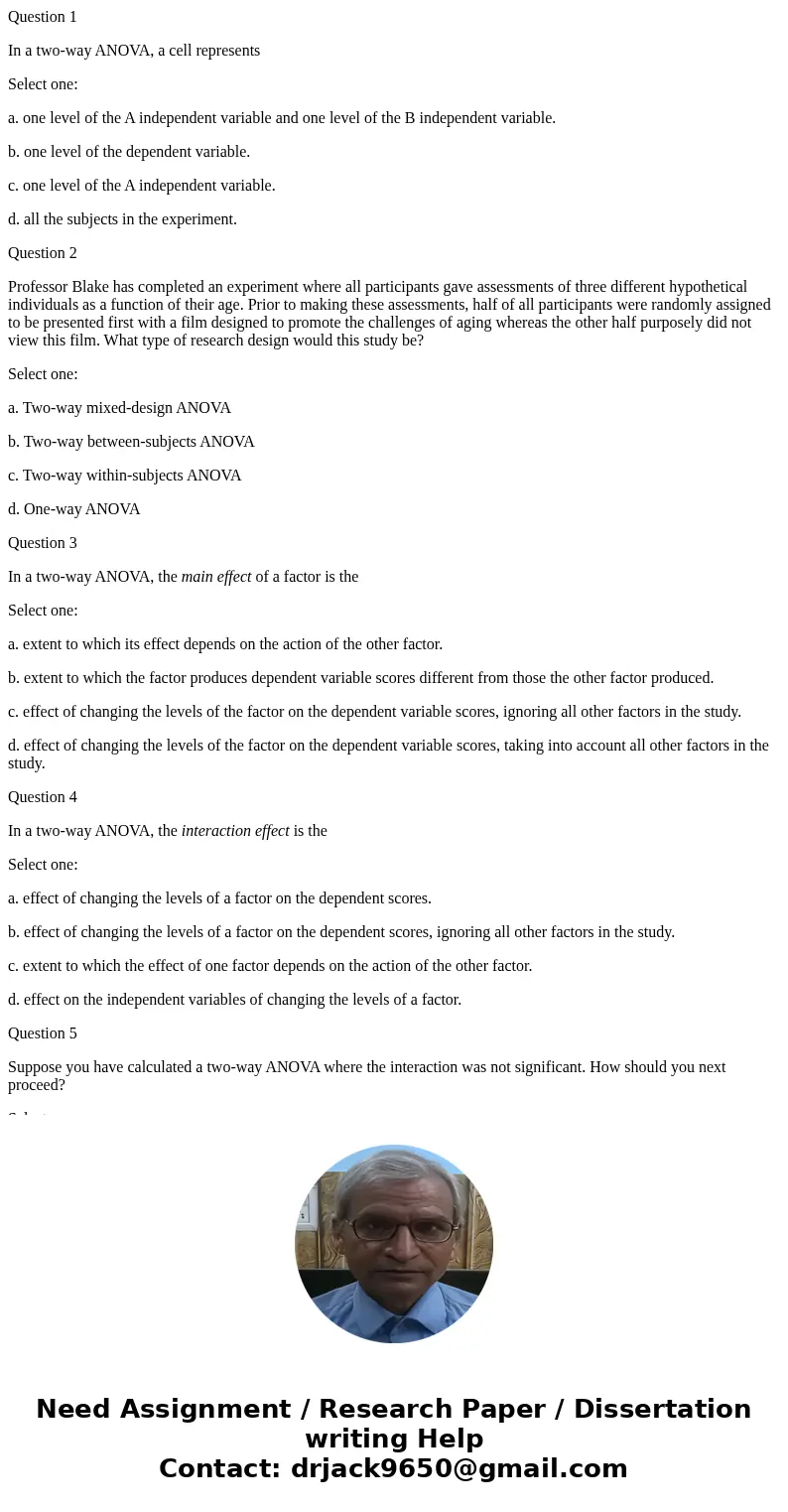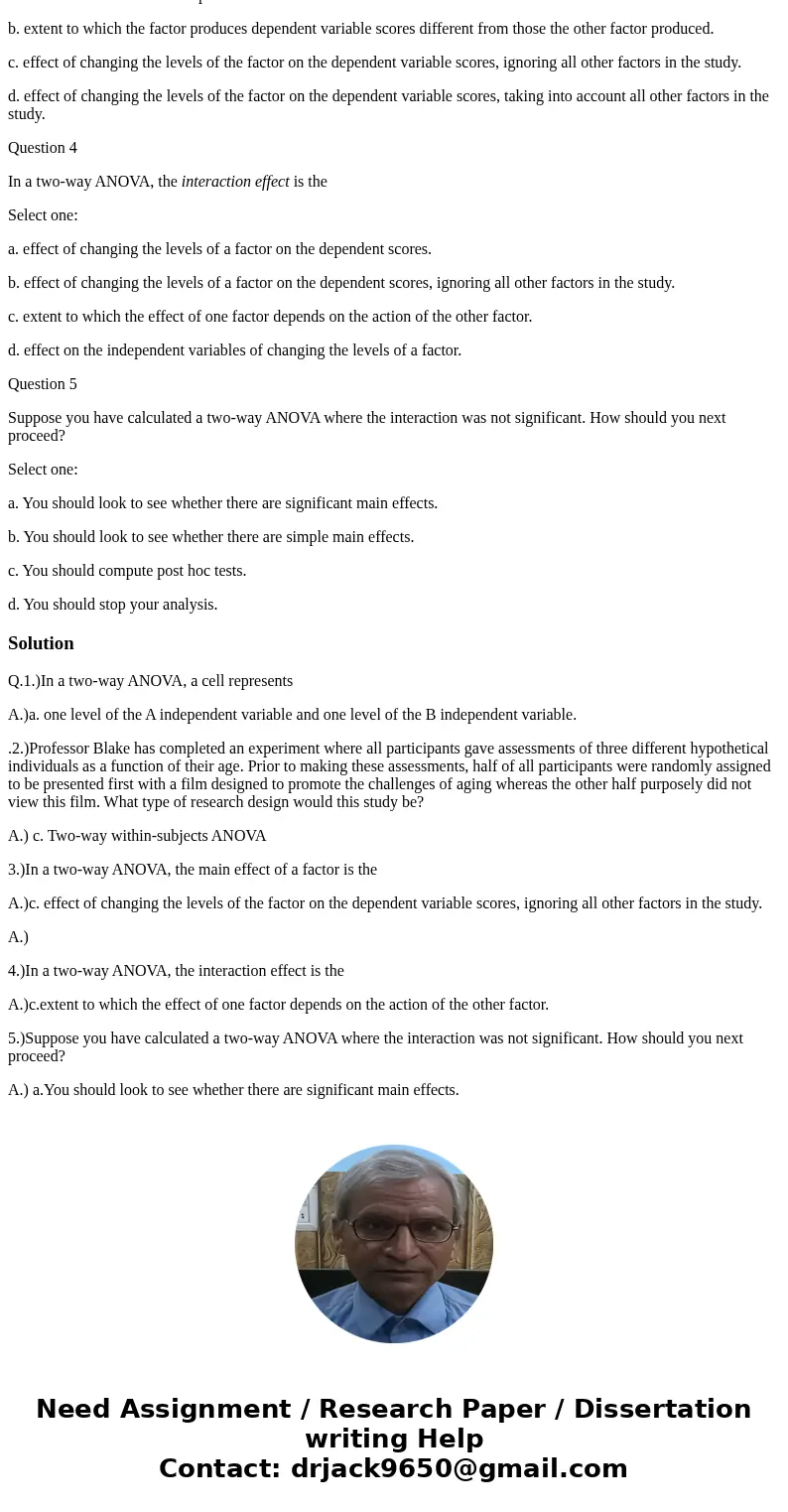Question 1 In a twoway ANOVA a cell represents Select one a
Question 1
In a two-way ANOVA, a cell represents
Select one:
a. one level of the A independent variable and one level of the B independent variable.
b. one level of the dependent variable.
c. one level of the A independent variable.
d. all the subjects in the experiment.
Question 2
Professor Blake has completed an experiment where all participants gave assessments of three different hypothetical individuals as a function of their age. Prior to making these assessments, half of all participants were randomly assigned to be presented first with a film designed to promote the challenges of aging whereas the other half purposely did not view this film. What type of research design would this study be?
Select one:
a. Two-way mixed-design ANOVA
b. Two-way between-subjects ANOVA
c. Two-way within-subjects ANOVA
d. One-way ANOVA
Question 3
In a two-way ANOVA, the main effect of a factor is the
Select one:
a. extent to which its effect depends on the action of the other factor.
b. extent to which the factor produces dependent variable scores different from those the other factor produced.
c. effect of changing the levels of the factor on the dependent variable scores, ignoring all other factors in the study.
d. effect of changing the levels of the factor on the dependent variable scores, taking into account all other factors in the study.
Question 4
In a two-way ANOVA, the interaction effect is the
Select one:
a. effect of changing the levels of a factor on the dependent scores.
b. effect of changing the levels of a factor on the dependent scores, ignoring all other factors in the study.
c. extent to which the effect of one factor depends on the action of the other factor.
d. effect on the independent variables of changing the levels of a factor.
Question 5
Suppose you have calculated a two-way ANOVA where the interaction was not significant. How should you next proceed?
Select one:
a. You should look to see whether there are significant main effects.
b. You should look to see whether there are simple main effects.
c. You should compute post hoc tests.
d. You should stop your analysis.
Solution
Q.1.)In a two-way ANOVA, a cell represents
A.)a. one level of the A independent variable and one level of the B independent variable.
.2.)Professor Blake has completed an experiment where all participants gave assessments of three different hypothetical individuals as a function of their age. Prior to making these assessments, half of all participants were randomly assigned to be presented first with a film designed to promote the challenges of aging whereas the other half purposely did not view this film. What type of research design would this study be?
A.) c. Two-way within-subjects ANOVA
3.)In a two-way ANOVA, the main effect of a factor is the
A.)c. effect of changing the levels of the factor on the dependent variable scores, ignoring all other factors in the study.
A.)
4.)In a two-way ANOVA, the interaction effect is the
A.)c.extent to which the effect of one factor depends on the action of the other factor.
5.)Suppose you have calculated a two-way ANOVA where the interaction was not significant. How should you next proceed?
A.) a.You should look to see whether there are significant main effects.


 Homework Sourse
Homework Sourse